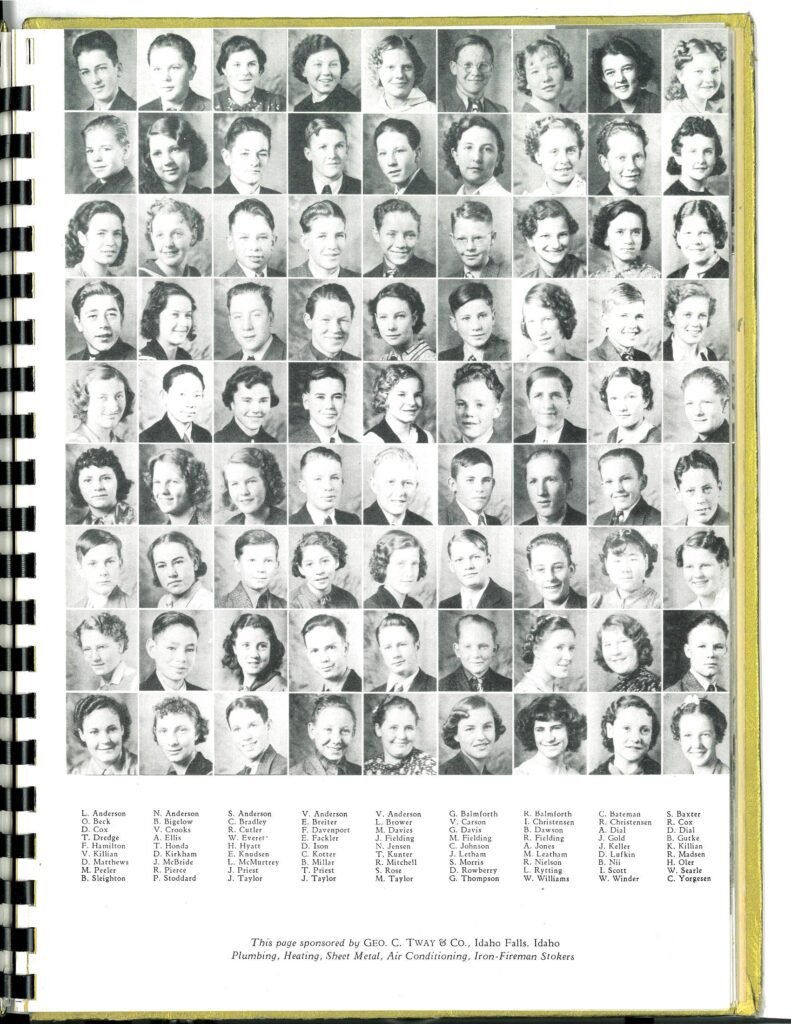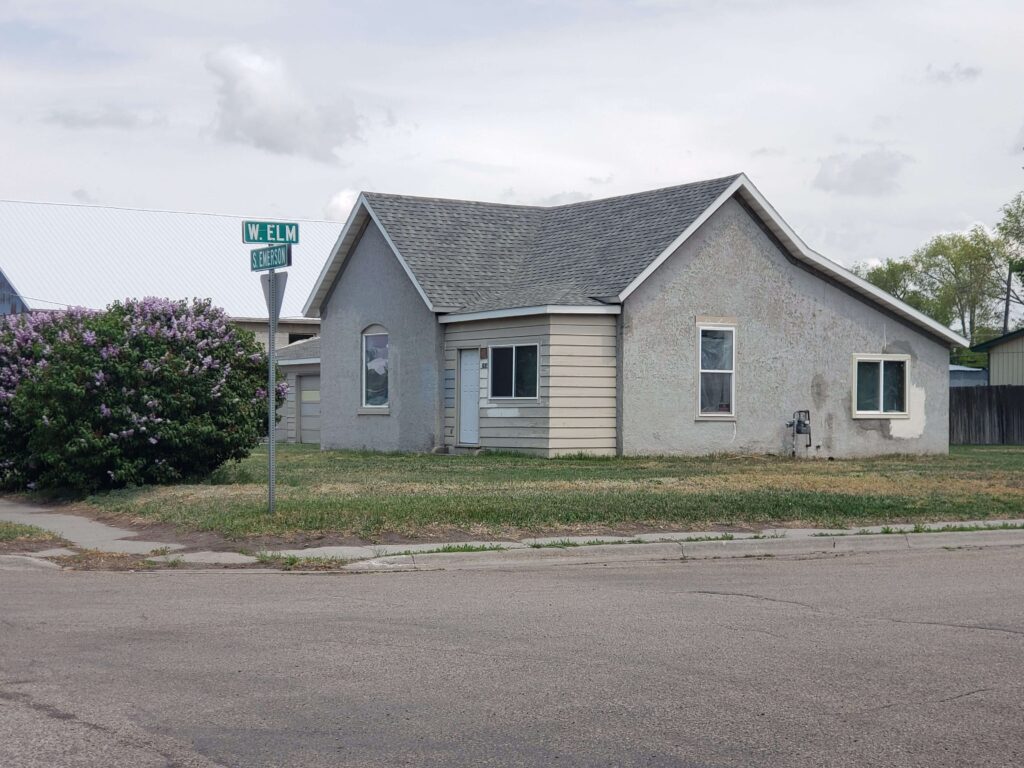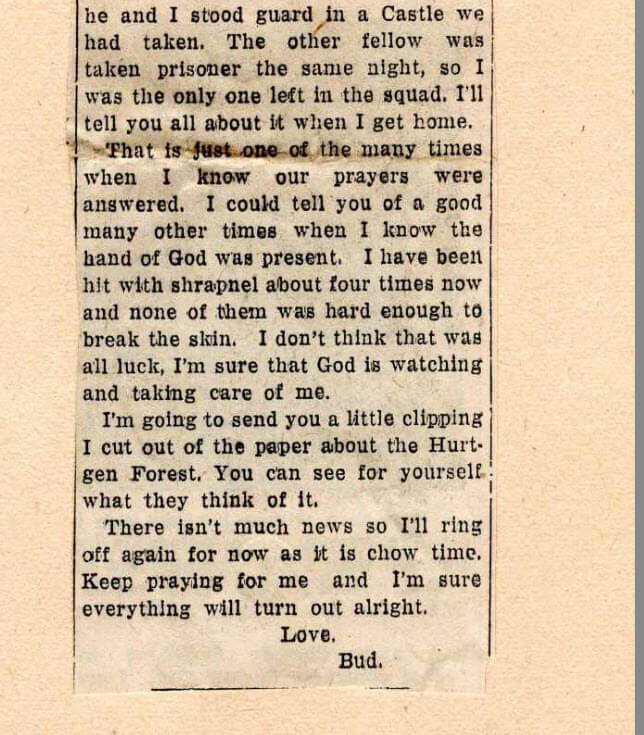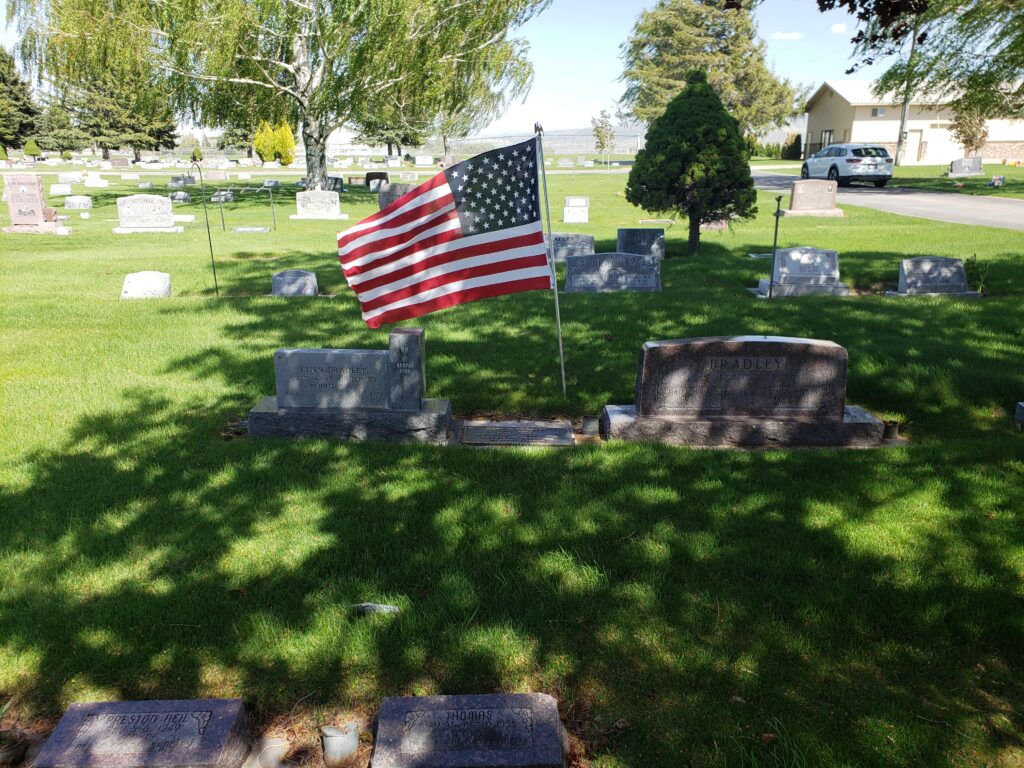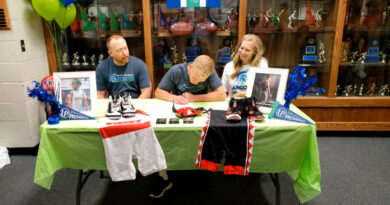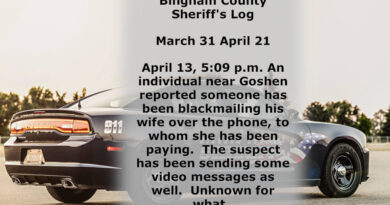After nearly 80 years, a Shelley man killed at Pearl Harbor is coming home
SHELLEY – The earthly remains of Carl Merrill Bradley, Navy Fireman 2nd Class, an uncle, a brother, and a son, is returning home to the community he left over 80 years ago to serve the country he loved. He will be interned at Hillcrest Cemetery with full military honors on June 26, at 11 a.m.
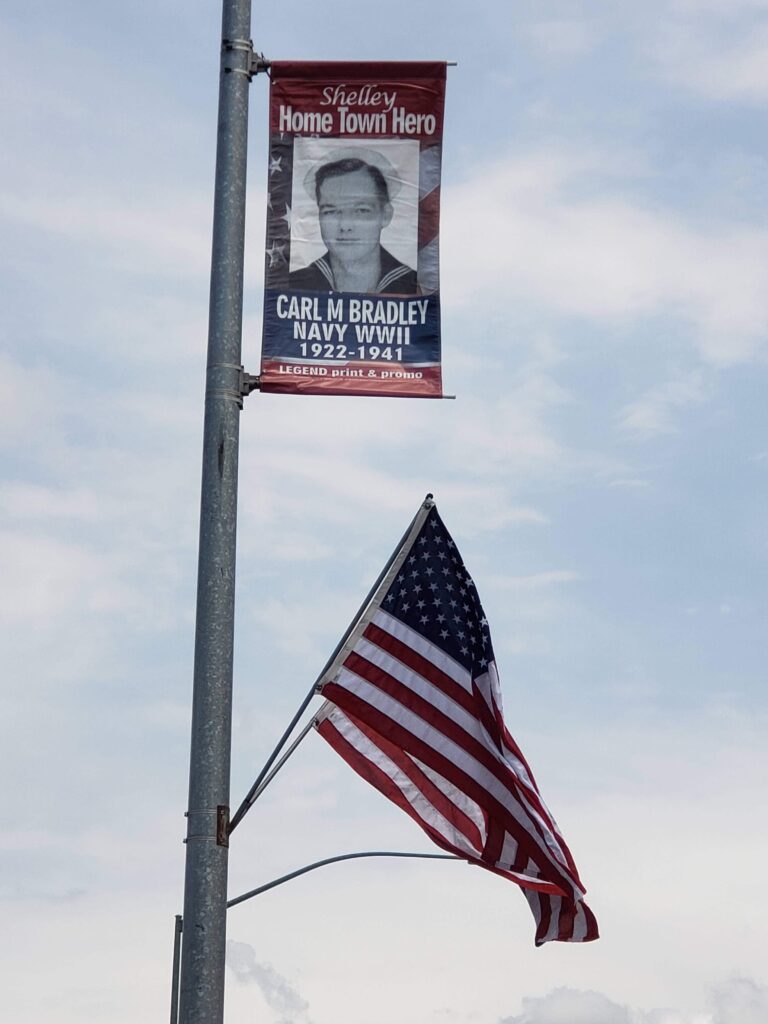
In the small town of Shelley, located in the middle of Southeastern Idaho, banners hang from the light posts on Main Street, memorializing the men who lost their lives while serving their county. Several years ago, these banners were created as part of a Boy Scout project to remind the community that the ultimate sacrifice is sometimes required for freedom and peace to prevail.
Carl M. Bradley is one of the individuals whose name and photo are imprinted on one of these banners. According to a Post Register article, dated February 14, 1942, Fireman Bradley was the first person from the Shelley area to die in World War II.
Carl was born on May 6, 1922, to Melvin and Hazel Bradley. He was the sixth child of thirteen children. He had eight brothers and four sisters. Carl grew up in Shelley and attended its schools.
RELATED: Hometown Hero Carl Bradley to be buried at Shelley’s Hillcrest Cemetery
In December 1940, Carl enlisted in the Navy without completing his junior year in high school. He first entered basic training in San Diego, California, and later went to the Ford training plant in Dearborn, Michigan, where he studied the diesel engine. Carl was later stationed in Hawaii, serving as a Fireman 2nd Class on the USS Oklahoma, according to Bruce Bradley, who wrote The Amos Melvin Bradley Family In World War II personal history record.
Carl was able to return home one last time in the Fall of 1941.
“He came home on leave in the Fall (of 1941), and we had a family picture taken. We really treasure that picture,” said his brother Wallace Bradley, in the life history he penned in 1972.

PEARL HARBOR ATTACK
As a Fireman 2nd Class, Carl was assigned to one of twelve boiler rooms on the lowest level of the USS Oklahoma. On the morning Pearl Harbor was attacked, at battle station, Carl would have been at his post performing his duties in the boiler room.
The USS Oklahoma was docked at the southern end of battleship row on the harbor side of the USS Maryland. Battleship row consisted of six battleships moored offshore on the east side of Ford Island at Pearl Harbor.
The day started as a typical Sunday morning, with most service members in bed recovering from late-night partying, at early church services, ashore for the weekend, or just starting their post duties for the day. According to an article in the Baltimore Sun in 2011, the weather that morning at Pearl Harbor was clear with scattered clouds, the mid-70s, and light winds from the east and northeast.
All seemed well on the island until 7:53 a.m., when suddenly, by surprise, 40 torpedo bombers and 49 “Kate” horizontal bombers from the Imperial Japanese Naval Air Service descended on the harbor from the northwest, southwest, and northeast. These planes were accompanied on their mission by 94 “Zero” fighter aircraft. All of them came from three Japanese aircraft carriers, stealthily hiding 200 miles north of the island of Ohau, according to Naval History and Heritage Command.
At the beginning of the attack, not a single American aircraft was in the air to engage the attacking aircraft as it was a complete surprise, according to the US Navy’s Youtube channel.
The first wave of torpedo bombers was disappointed that the anticipated aircraft carriers – the USS Lexington and USS Enterprise – were at sea on local operations northwest of Hawaii. The USS Saratoga was also away on duty. The lead torpedo bomber and his wingman flew onto battleship row. However, other squadron members attacked the decommissioned USS Utah and USS Raleigh, thinking they were capital ships. As a result, they sank Utah and damaged the Raleigh, according to the video Attack on Pearl Harbor 1941.
At 7:56 a.m., the attack on battleship row commenced. Attack on Pearl Harbor 1941 describes how the torpedo bombers lined up and flew up the southeast loch channel, which led directly to the USS Oklahoma and USS West Virginia.
The other battleships, the USS Arizona and USS Nevada, were more protected by tall naval buildings on the harbor’s east side, blocking torpedo bombers from dropping their ordinance. However, the USS Arizona was devastatingly destroyed by aerial bomber planes.
According to a Commander of the USS Oklahoma, half of the Japanese torpedo planes launched torpedos against the USS Oklahoma and the USS West Virginia. Twelve were aimed at Oklahoma and 11 at West Virginia. Nine struck the Oklahoma broadside, and seven hit West Virginia.
Oklahoma capsized within 11 minutes. West Virginia did not capsize but sank to the harbor’s bottom.
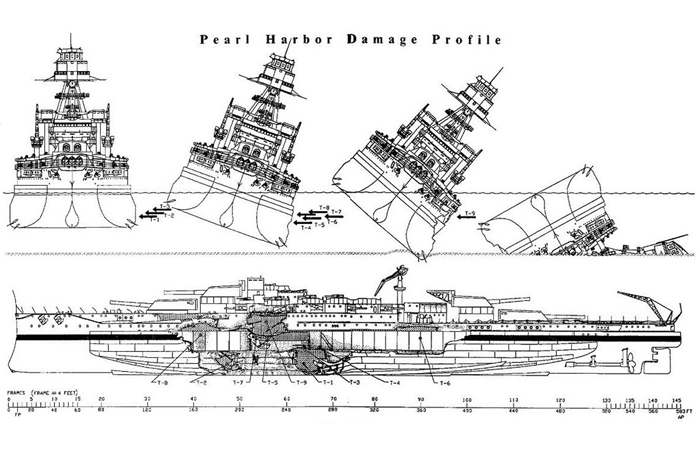
As the attack began, personnel on the USS Oklahoma watched as the cruiser Helena across the harbor was slammed with a torpedo. They immediately alerted “general quarters” telling the crew of the attack.
“Man the anti-aircraft batteries. Man the anti-aircraft batteries,” said a voice coming over the ship’s general announcing system, according to the book Trapped at Pearl Harbor: Escape from the Battleship Oklahoma.
Stunned by the unexpected call, Carl Bradley and all the other sailors on the ship likely stopped short whatever they were doing to process this information. After all, the ship was in port at Pearl Harbor on a Sunday morning.
Shortly after came the call, “General Quarters! General Quarters! All hands, man your battle stations! All hands, man your battle stations.”
These may have been some of the last words heard by Fireman 2nd Class Bradley as the first torpedos that struck Oklahoma hit the engine and boiler rooms, exactly where Carl would have been posted during “general quarters.”
A commanding officer of the USS Oklahoma wrote in a letter dated Dec. 18, 1941, at 7:56 a.m., Oklahoma was hit simultaneously with two torpedos, 20 feet below the water line between the smokestack and mainmast. A third torpedo penetrated the hull and destroyed many of her boiler rooms, killing all of the occupants in that area. Six more torpedos slammed into her hull as she capsized.
“Oklahoma was mortally wounded. A great wrenching and groaning ran down her length, as beams and stanchions, decks and bulkheads twisted and broke with the stresses put upon them.’ ‘Sailors caught in the direct force of the blast, or who were in the path of falling, breaking things, screamed as they were crushed to the deck, or looked at the water rushing in to engulf them where they lay,” Trapped at Pearl Harbor: Escape from the Battleship Oklahoma.
Within 15 minutes from the first attack on Pearl, Carl M. Bradley, and 428 other crew members had either perished or were entombed in the hull of Oklahoma in a sea of water. The next day, 33 survivors were rescued by crews cutting a hole through the ship’s hull. Despite this heroic effort, the remaining victims laid buried in the capsized ship for two more years.
The USS Arizona also met a violent end. Although not torpedoed, it faced a barrage of aerial attacks. According to an article in Time Magazine dated Dec. 6, 2019, a 1,760-pound bomb strategically struck the ship’s forward deck dropping through the surface and igniting hundreds of thousands of pounds of ammunition in the forward magazine, which exploded all at once, lifting the 33,000-ton vessel out of the water and killing 1,177 sailors and Marines instantly. This death count represented almost half of the 2,390 American service members and civilians killed by the attack that same day.
BRADLEY FAMILY RECEIVED WORD OF THE ATTACK
The Bradley family received word of the Pearl Harbor attack the same day. Even Carl’s brother J. Neil, who was serving an LDS Mission in the East Central States, heard about the attack later that day.
“Neil didn’t learn about the bombing until late that afternoon and was just heartsick because he knew that Carl was on the battleship,” said Edythe Bradley, Neil’s wife, who wrote part of his life history.
According to an article in the Shelley Pioneer, Carl’s parents were also very anxious about his condition, but they thought he might be safe as time went on without word about him. However, their hopes turned to despair on Dec. 22, 1941, when they received a Western Union telegraph.
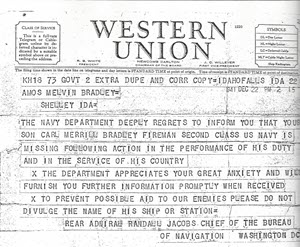
The telegraph reads, “The Navy Department deeply regrets to inform you that your son Carl Merrill Bradley Fireman Second Class US Navy is missing following action in the performance of his duty and in the service of his country. The Department appreciates your great anxiety and will furnish you further information promptly when received. To prevent possible aid to our enemies please do not divulge the name of his ship or station.”
The telegram was signed “Rear Admiral Randall Jacobs, Chief of the Bureau of Navigation.”
The Bradley’s were devastated by this news but tried to continue on with their lives. Â
On Feb. 12, 1942, the Bradley family received a second telegram stating Carl was killed in action, according to an article in the Post Register on Feb. 14, 1942.
According to the article, a memorial service was to be held at The Church of Jesus Christ of Latter-day Saints Second Ward Chapel in Shelley on Monday afternoon with Bishop Floyd Kelley in charge.
“Carl’s death was very hard on Dad and Mother, but they adjusted to the shock with their testimony [in the gospel of Jesus Christ]. This war was the start of many heartaches for all of us,” The Bradleys’ son Wallace wrote in his life history.
TRIALS AND WAR
World War II was the beginning of many trials of faith for the Bradley family. First, Carl’s brother Lynn, who married Jean Anderson one week after Carl’s death, was drafted and inducted into the Army on Feb. 10, 1942, following the United States’ declaration of war on Japan.
Then on Aug. 2, 1942, Carl’s father, while hauling hay in Soda Springs, Idaho, suddenly died of a heart attack leaving his wife with seven children at home. He had struggled with this health for a year before passing according to an Aug. 3, 1942, article in the Post Register.
“Dad died today. Oh, God, why does tough luck hit in one place so hard?” Lynn Bradley wrote in his journal.
According to Lynn’s nephew, Bruce Bradley, shortly before his father’s death, Lynn learned that his wife Jean was pregnant. She gave birth in October of 1942, and he was able to get a furlough to see his new baby girl, Linda. He also returned home for her first birthday. But was shipped overseas shortly after.

While overseas, Lynn’s daughter contracted leukemia. Lynn was on a ship to India, and then Australia and did not find out about her illness until after she had passed away.
After Linda’s passing, Jean joined the Women’s Army Corps and was stationed at various hospitals throughout the United States. Both Lynn and Jean were discharged from the Army at the same time. Lynn had served four years during the war as an aircraft mechanic. He was awarded the Bronze Star for Meritorious Service for his work with aircraft.
Five of the Bradley brothers had either joined or were drafted into the armed forces during the war. In addition to Lynn, Newell Bradley was drafted into the Army in January of 1943 after graduating from Shelley High School. Wallace, who was married and had three children, was drafted into the Army in April 1944.
J. Neil Bradley returned home from his mission in December 1942. While on his mission, he had been courting, through letters, Edythe Yancey. They were married in January of 1943.
According to his wife Edythe, Neil thought he would be drafted into the Army soon after their marriage. However, he received a job from his Bishop, Floyd Kelley, giving him an agricultural deferment for two years to work and support his widowed mother, Hazel Bradley, and his siblings still at home.
In January 1945, Neil enlisted in the Navy, the same service as his brother, and served until his discharge 1946.
Carl’s younger brother, Dallas Robert (Bob) Bradley, joined the Navy when he was 17 at the end of the war in 1945. He served less than one year before receiving an honorable discharge.

Wallace, an older brother to Carl, was sent to serve in the European theater. According to an article in the Shelley Pioneer, He fought in the Heurtegen (Hurtgen) Forest. He sent a letter back to his family explaining how he was with a squad of twelve men, and by nightfall, only he and one other soldier remained alive. They had taken an old castle and were standing guard when a German soldier, who had hidden in the structure, crept out and shot his buddy, killing him.
Latter, Wallace was seriously injured by two mortar shells that landed near him outside Cologne, Germany, along the Rhine River. The injuries were severe enough to have him transferred back to the United States, where he recuperated in Walla Walla, Washington, where his wife could be present.
CARL GONE BUT NEVER FORGOTTEN
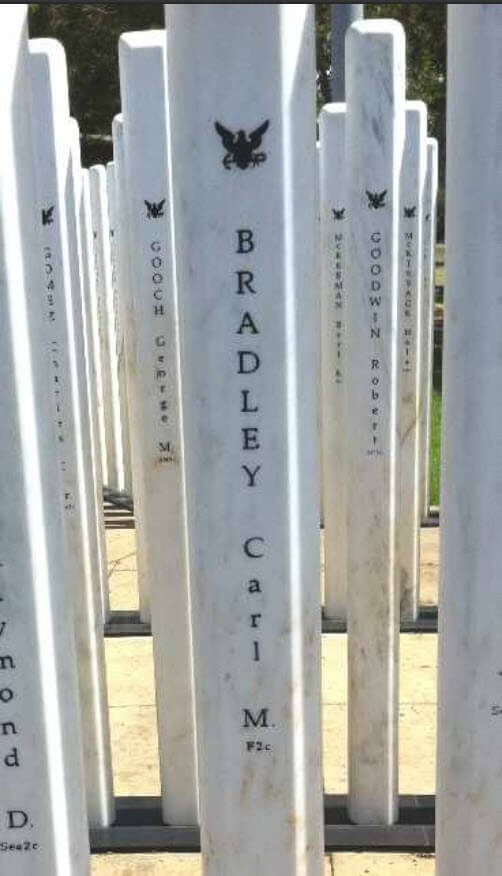
In May of 1943, Carl, having been confirmed deceased with his body entombed in the overturned USS Oklahoma at Pearl Harbor, his mother requested a burial flag. Several weeks later, she was informed by the Veteran’s Administration that her request could not be granted because his body had not been found, nor had it been buried.
Early in March of 1943, the USS Oklahoma was uprighted in the harbor, and a recovery operation began removing the remains of the sailors and Marines, who died during the attack.
“Most of the dead were found in the wreckage during the months-long salvage operation, [But] by then, the bodies had been reduced to skeletons,” according to a memo by Heather Harris, historian for Defense POW/MIA Accounting Agency. “By 1944, the jumbled skeletons, saturated with fuel oil from the ship, had been buried as unknowns in two Hawaiian cemeteries.”
Three years later, they were disinterred and taken to a military laboratory near Pearl Harbor for attempted identification. The sole method of identifying skeletal remains in that day was by using prior dental records with the teeth of the deceased. Twenty-seven tentative identifications were made, but they were rejected as incomplete by authorities according to an article in the Washington Post, dated Dec. 6, 2015.
Meanwhile, the laboratory, thinking most of the bones would eventually go into a mass reburial, arranged them in orderly groups, placing all the skulls in one casket, all the leg bones in another, and so on. But military officials rejected that arrangement and ordered the skeletons reassembled.
Reassembling was an impossible task. However, the laboratory worked to collect what looked like complete skeletons, wrap them in bundles of white cloth, and place the bundles in scores of individual metal caskets. In 1949, the remains were formally declared unidentifiable. By 1950, they had been reburied in the National Memorial Cemetery of the Pacific in Hawaii, often called the Punchbowl, in Honolulu.
Carl’s mother lived another ten years before passing away in February 1953, at 62 years of age due to a lingering illness.
“All of the Bradley children remembered Carl and the ultimate sacrifice he made serving his country. Newell Bradley went many times to Pearl Harbor’s Arizona Memorial to pay respects to his brother,” Nancy Cannon Bradley said. “The last time he went, he could not go out to the memorial because he was so overcome with emotion. This spurred something in my husband Bruce, where he felt like he needed to do something for the family.”
Bruce began to research Carl and all of this uncle’s and aunt’s histories to document for future generations the stories and sacrifices the Bradley family made from 1941 to 1946.
In 2003, Carl was also remembered by his alma mater Shelley High School, when they awarded him with a post-humous graduation diploma. Karen Little, his youngest sister, accepted the award on Carl’s behalf.
“They gave a graduation diploma to Carl and several other men who left that year early to serve in the armed forces,” Little told Community Pioneer. “Some of the men were still alive who came to the ceremony.”
CARL’S BODY IDENTIFIED
Bruce Bradley felt that documenting his family’s history was not enough to pay tribute to the family legacy. In 2015, he reached out to the Defense POW/MIA Accounting Agency, an agency within the United States Department of Defense whose mission is to recover US military personnel who are listed as prisoners of war or missing in action. Bruce provided the agency with the needed paperwork and DNA from Carl’s two living sisters to begin the process of identifying his remains.
“You can’t imagine the paperwork Bruce filled out,” said Nancy Cannon Bradley with tears streaming down her face. “Bruce told me, ‘I just want things done. I just want him to be brought home.'”
According to Nancy, her husband had a military burial plaque placed at Carl’s future burial site at Hillcrest Cemetery in Shelley. Shortly after that, Bruce was severely injured in a freak accident while working in his yard. He died several days later on Aug. 21, 2017.
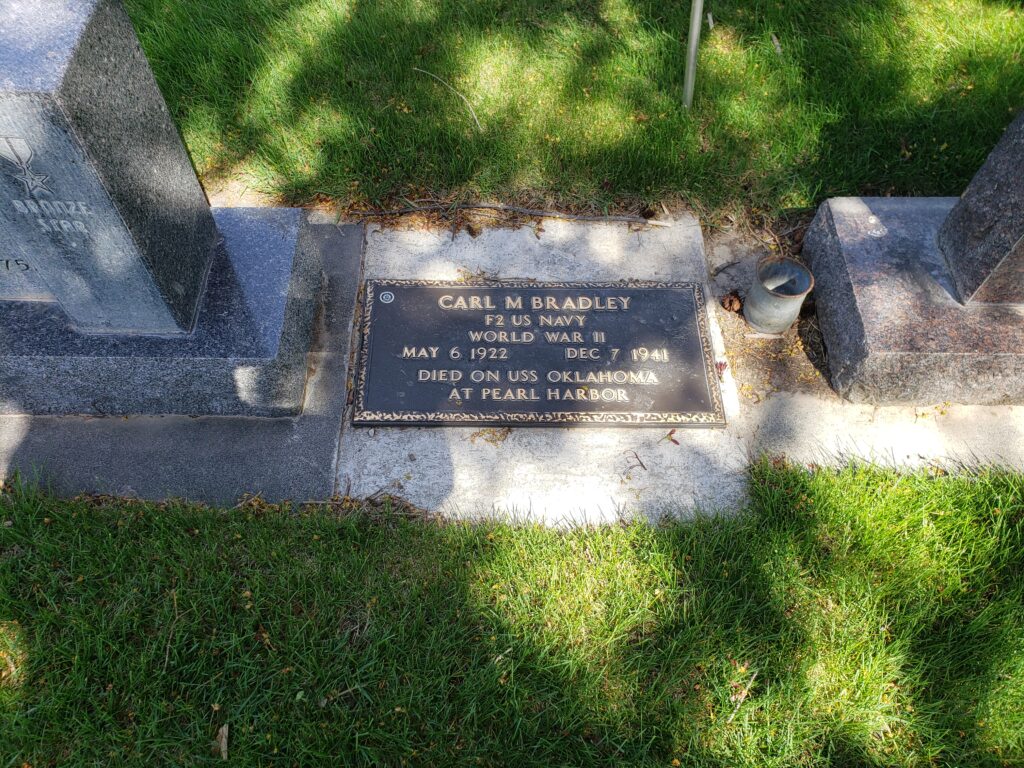
In a press release dated May 14, 2021, DPAA announced that Navy Fireman Second Class Carl M. Bradley’s remains had been identified on Feb. 5, 2021.
As a result, he is coming home. He is coming home to the town he left almost 80 years ago. He is coming home to lie in rest with the earthly remains of his parents, his siblings, and his niece and nephew.
Funeral services will be held for Carl M. Bradley on June 26, 2021, at 11 a.m. at the Hillcrest Cemetery. The United States Navy will conduct the funeral in conjunction with Nalder’s Funeral Home. Members of the community are encouraged to attend this service.

